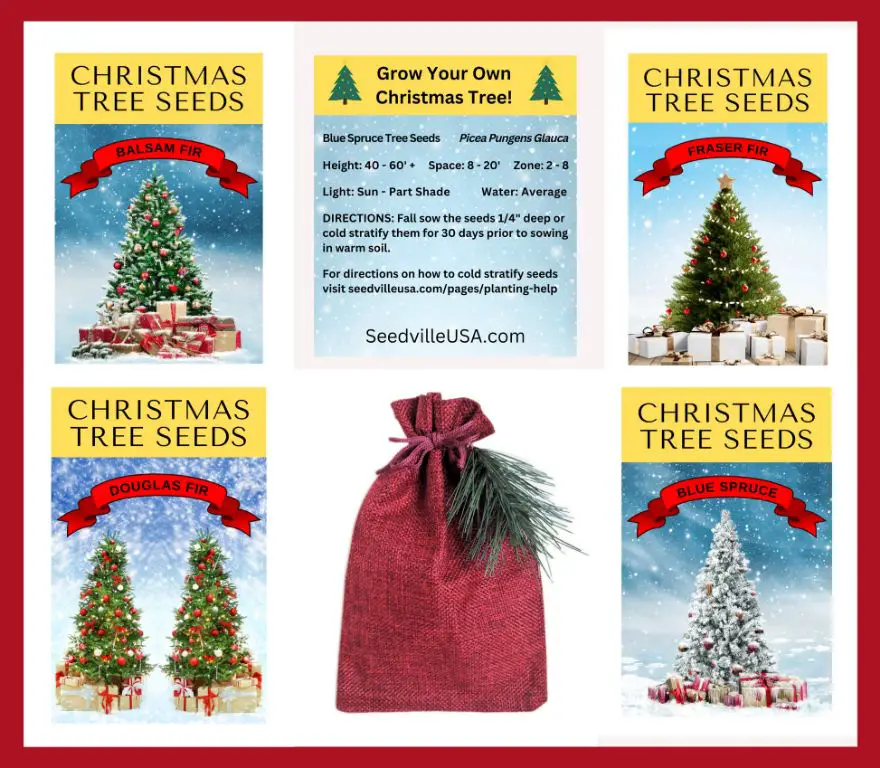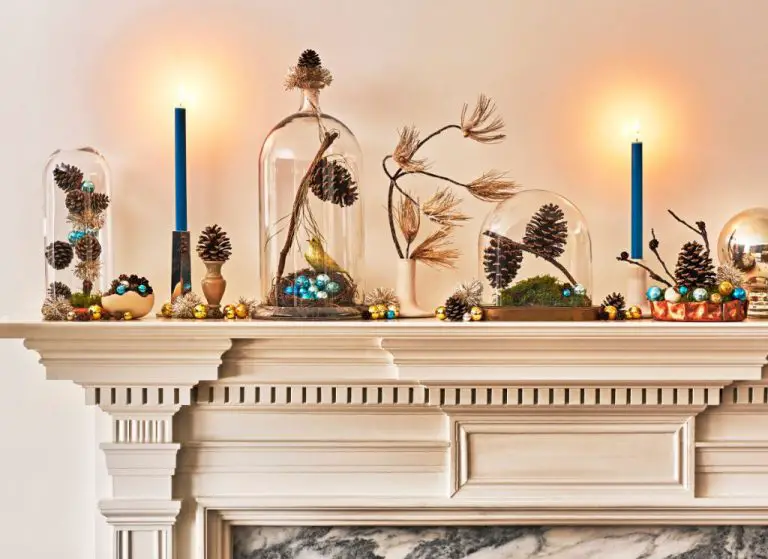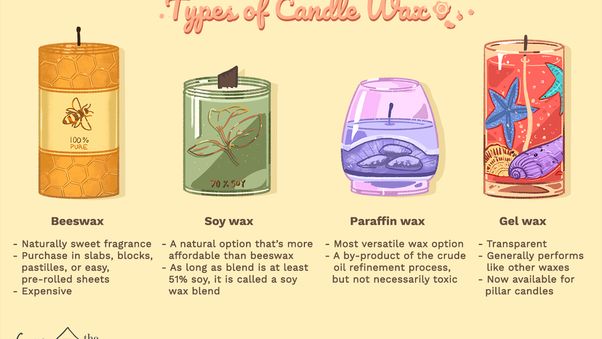Is Balsam A Christmas Scent?
What is balsam?
Balsam refers to several different species of plants that produce aromatic resins or oils. The word “balsam” comes from the Latin and Greek words for “aromatic oil.” There are over 100 species of balsam plants, most originating in tropical regions. Some of the most common types include:
- Balsam fir – An evergreen conifer tree native to North America. The resin from balsam fir trees gives traditional Christmas trees their distinctive fragrance.
- Copaiba balsam – An oleoresin tapped from tropical copaiba trees. Used in perfumes and folk medicine.
- Mecca balsam – An extract from the Balm of Gilead tree, also known as the balsam poplar.
- Peru balsam – An aromatic resin from El Salvador balsam trees. Used as an ingredient in food and cosmetics.
- Tolu balsam – A balsam extract from tropical trees in South America. Used in baked goods, candy, and cough syrup.
The resins and oils (balsams) from these plants have been used for centuries in incense, medicine, and perfumes. Certain balsams like copaiba and Peru balsam are still commonly used in aromatherapy and natural remedies today.
The term “balsam” may also refer to the fragrant sap or resin within coniferous trees like firs and pines. This sap provides the characteristic scent of holiday evergreens like the Christmas tree.
History of balsam
Balsam fir trees have long been associated with the Christmas season. Native to northeastern North America, balsam fir trees were used by Native Americans for medicinal purposes as well as for building materials, according to RealChristmasTrees.org. The aromatic resin from balsam fir trees was used as an antiseptic and healing balm.
During the Civil War, balsam fir resin was applied to wounds as an antiseptic, as noted on RealChristmasTrees.org. And in the late 1800s, balsam fir trees gained popularity as Christmas trees due to their lovely shape, fresh scent, and ability to retain needles even after being cut down.
Today, balsam fir remains one of the most popular and traditional Christmas tree varieties. Their rich, long-lasting pine scent helps create that quintessential Christmas aroma. The trees are often marketed specifically for their nostalgic, traditional appeal and scent. As The Adirondack Experience notes, “The Balsam Fir tree has been an important natural resource for the Adirondack region for many years.” The balsam fir’s signficance at Christmastime continues today.
Balsam as a Christmas Fragrance
Balsam has become a quintessential Christmas scent due to its widespread use in holiday decorations and fragrances. The refreshing, woody aroma of balsam fir and pine needles is commonly associated with Christmas trees. As a result, artificial versions of these forest scents are popular in candles, potpourri, wreaths, and other holiday decor.
According to research on olfactory psychology, the smell of balsam and pine can evoke nostalgic memories and emotions tied to past Christmas celebrations (https://naturalnicheperfume.com/olfactory-psychology/). When we smell balsam, it conjures up imagery of a softly lit Christmas tree and feelings of joy, relaxation, and childhood wonder. Studies suggest scents are especially effective at triggering vivid recollections due to the close neurological connections between the olfactory system and the areas of the brain involved in memory and emotion.

The popular association between balsam and holiday nostalgia is evident in the proliferation of balsam-scented candles, room sprays, and diffusers sold during the Christmas season. Scented products like Balsam Fir home fragrance oils are marketed to consumers as a way to make their homes smell like Christmas (https://www.psychologytoday.com/us/blog/the-athletes-way/201712/how-do-nostalgic-scents-get-woven-long-term-memories). For many people, the sweet, piney aroma of balsam fir is an integral part of their holiday traditions and celebrations.
Other Christmas tree scents
While balsam is a popular Christmas tree fragrance, there are several other scents that Christmas trees can give off depending on the species:
Pine – Pine trees like Scotch pine give off a fresh, bright scent from oils like pinene. The sharp, clean aroma of pine is another quintessential Christmas tree smell. According to the National Christmas Tree Association, Scotch pine is one of the most common Christmas trees in the United States.1
Spruce – Spruce trees like blue spruce and Norway spruce emit woodsy, earthy aromas from oils like delta-3-carene. The pleasantly pungent spruce scent is often used in air fresheners and cleaning products.2
Fir – Firs like Fraser fir and balsam fir produce a sweet, refreshing fragrance from compounds like bornyl acetate. Many people find the crisp fir smell to be the most nostalgic Christmas tree scent.3
Cedar – Cedar trees give off a warm, comforting odor from oils like cedrol. The woody, resinous cedar aroma adds a unique touch to Christmas.4
What gives Christmas trees their scent?
Christmas trees like fir, spruce, and pine get their characteristic scent from the oils and resins within their needles and bark. Trees produce these aromatic compounds as part of their normal metabolic processes. The oils help protect the tree from insects and diseases, while the resins help seal over wounds and prevent infection.
Some key aromatic compounds found in conifers are alpha-pinene, beta-pinene, limonene, camphene, bornyl acetate, and terpineol. These create the fresh, woody, balsamic notes commonly associated with the Christmas tree smell. The relative concentrations and volatility of the compounds determine the intensity and character of each tree’s scent profile.
When the tree is first cut, the wounding causes a burst of these aromatic compounds to be released. However, over time the volatility decreases as the easily evaporated compounds dissipate. The scent becomes less intense but can still be detected. Older needles also tend to be less aromatic than newly grown ones.
To maximize Christmas tree scent, it’s best to choose recently cut varieties like noble or Fraser fir. Proper post-harvest care like keeping the tree hydrated will also help retain volatile aroma compounds. Trees that are weeks old will have a more muted smell.
Regional differences
Christmas tree scents vary by region, with certain tree varieties being more popular in some areas than others. According to https://www.purewow.com/home/best-smelling-christmas-tree, the Northeast and Midwest tend to prefer balsam fir for its strong, crisp pine scent. The Fraser fir is popular in the Southeast for its sweet, fruity aroma. Noble fir is a top choice on the West Coast due to its citrusy pine notes. The Scotch pine is beloved in the Southwest for its pleasant, earthy smell.
There are also cultural associations between certain Christmas tree species and regional heritage. In the Midwest, the Norwegian-American community has a strong tradition of decorating balsam firs, tracing back to customs in Norway. The Eastern white pine sometimes represents New England regional identity. The Virginia pine has long been a symbol of the American South. In the Southwest, piñon pines connect to Hispanic cultural heritage.
Artificial tree scents
Artificial Christmas trees are often scented to provide a more realistic and enjoyable experience. There are a few different methods manufacturers use to add scent to artificial trees:
Many artificial trees come pre-scented from the factory. Manufacturers typically spray the tree branches with scented oils during production. Some common scents used for artificial trees include pine, spruce, fir, balsam, cider, vanilla, and cinnamon [1]. These built-in scents may last for one or more seasons depending on the type and amount of fragrance oil used.
Another option is scent sprays designed just for artificial trees. Products like Scent-A-Tree allow you to manually spray your tree with woodsy scents like pine and balsam fir [2]. These scented sprays can revive the scent of trees that have lost their artificial fragrance from previous years.
Scented ornaments are also popular for artificial trees. Little scent sachets, pine cones, and scented wicks can be hung on branches to emanate cozy Christmas scents. Many homemade scent recipes use cinnamon sticks, cloves, oranges, and pine needles to naturally scent trees.
Overall, the most common scents for artificial Christmas trees aim to replicate evergreen varieties like fir, spruce, and pine. The intensity and longevity of the scent depends on the source and application method.
Health considerations
While the fragrant scent of Christmas trees is beloved by many, some people can experience allergies or sensitivities.
According to the American College of Allergy, Asthma and Immunology, Christmas tree allergies are fairly uncommon (source). The main compounds responsible for the characteristic Christmas tree smell are terpenes. For some people, exposure to terpenes can cause irritation and allergy-like symptoms known as Christmas tree syndrome.
Common symptoms include runny nose, itchy eyes, skin irritation, and asthma flare-ups. Those with skin sensitivities may develop a rash after touching the tree. The severity ranges from mild to more troublesome symptoms (source).
To minimize problems, choose a fir, spruce, or pine tree rather than cypress or cedar, which tend to be more allergenic. Make sure to give the tree a good shake outdoors after cutting to remove excess pollen and debris. Position the tree away from heating vents to reduce terpene circulation. Consider an air purifier and limit tree exposure for those with sensitivities (source). With some care and awareness, most people can enjoy Christmas trees without issue.
Scent preference survey
Recent surveys indicate that the scent of real Christmas trees, especially balsam fir, is strongly preferred by many people. In a November 2022 survey conducted by the Real Christmas Tree Board, when asked to rank holiday scents, 56% of respondents said the scent of a real tree was their favorite Christmas smell. This was followed distantly by hot chocolate at 14%, pumpkin pie at 8%, and peppermint at 6% [1].
The survey also found that the smell of a real tree elicits feelings of joy for many people. Over half of respondents (56%) said the scent made them feel joyful, while 45% said nostalgic, 38% said festive, and 30% said calm [2]. This indicates the powerful and enduring nostalgic associations the smell of real Christmas trees like balsam fir have for people.
Interestingly, preferences for real tree scents have increased over time. In 2004, only 35% of people said the smell of a real tree was their favorite, versus hot chocolate at 37% [3]. So the appeal of balsam and real tree scents has steadily grown over the past couple decades.
The enduring appeal of balsam
The scent of balsam has strong nostalgic ties and connections to Christmas traditions for many people. The piney, fresh, slightly woodsy fragrance immediately evokes memories of Christmas trees decorated with lights and ornaments. According to an article on homesick.com, “The smell of a fresh-cut balsam is something out of this world, invoking the nostalgia of the holidays past and present.”
Balsam fir trees have been a popular choice as Christmas trees for over a century. As reported by seacoastonline.com, “The balsam fir has been a part of New England Christmas tradition since the mid-1800s when Maine entrepreneurs loaded the trees on ox-drawn sleds and took them to the cities of the Northeast.” The tradition of cutting down balsam firs for Christmas trees continues today, along with artificial trees that recreate the nostalgic balsam scent.
Overall, the evocative scent of balsam plays a major role in holiday festivities and traditions. The balsam fragrance helps conjure up memories of Christmases past, connects us to time-honored customs, and infuses our celebrations with a sense of nostalgia and comfort.




